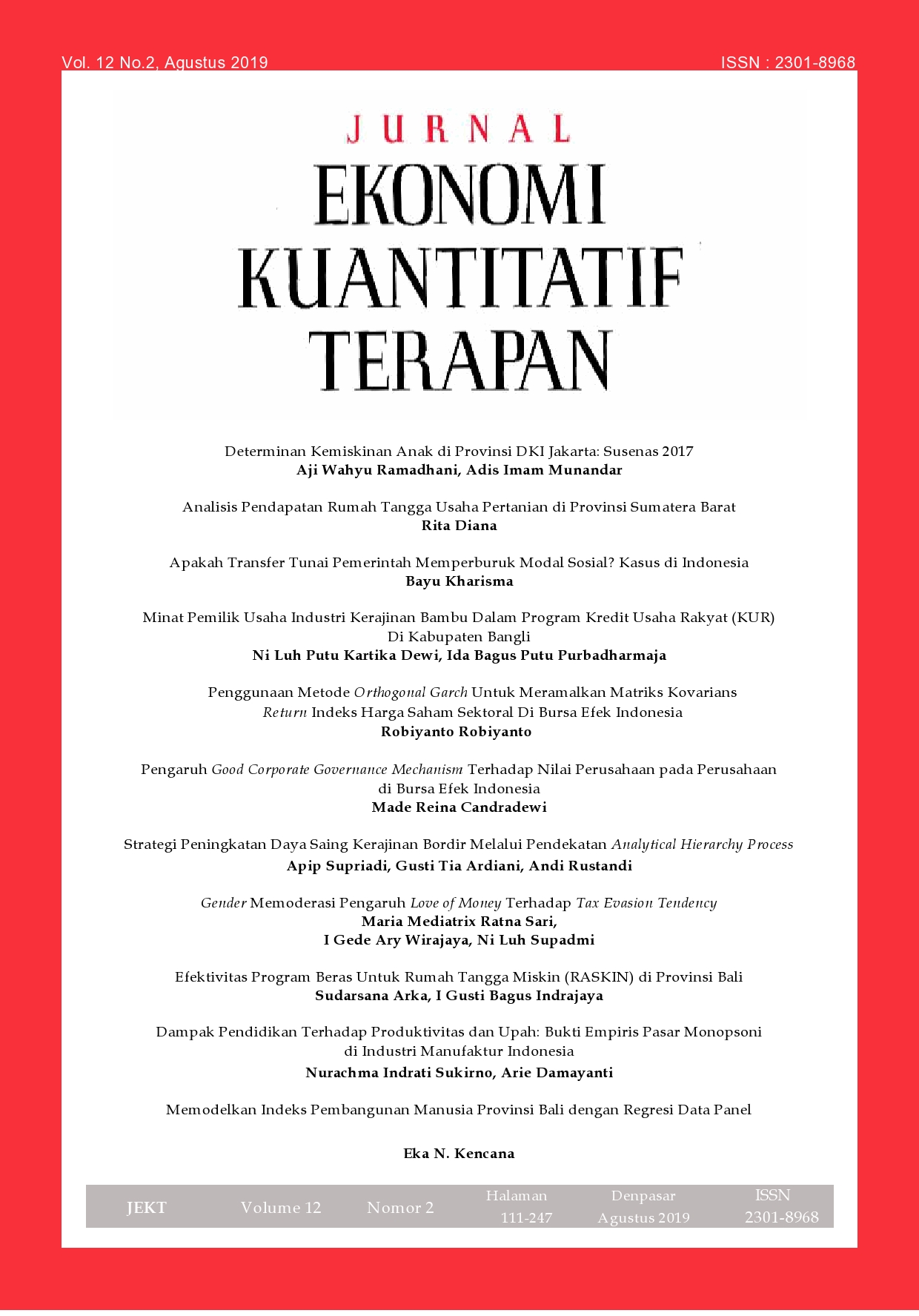Memodelkan Indeks Pembangunan Manusia Provinsi Bali dengan Regresi Data Panel
Abstract
This study is aimed to model Human Development Index (HDI) of Bali Province by applying panel data regression (PDR). HDI’s data of nine cities in Province of Bali for period 2009–2014 were used to demonstrate the ability of PDR to model. This research is directed to (1) determine which panel data regression model – Common Effect Model (CEM) vs Fixed Effect Model (FEM) – is more accurate to model the HDI’s data; and (2) to determine variable(s) that significantly affect the HDI’s. By utilizing 17 variables that are obtained from Statistics Office (BPS) of Bali, best model is developed. We concluded that FEM is more accurate than CEM in modelling HDI’s of Bali Province with coefficient of determination as much as 94.7 percent. In addition, two out of 17 variables i.e. the average length of time schooling and life expectancy proved significantly affect the HDI’s for all of cities in the Province of Bali.
Keywords: HDI, life expectancy, panel data, time schooling.
JEL Classification: O150, C510, C520.




















